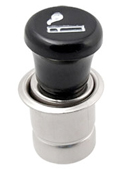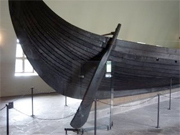 About 12 years ago I went on a three-day seminar about the wireless industry presented by the wonderfully named Herschel Shosteck (who unfortunately died of cancer last year although the company that bears his name still runs similar workshops). It was held at an Oxford college and since there were no phones in the rooms, they didn’t have a way to give us wake-up calls. So we were all given alarm clocks. But not a modern electronic digital one. We were each given an old wind-up brass alarm clock. But there was a message behind this that Herschel had long espoused: old standards live a lot longer than you think and you can’t ignore them and hope that they will go away.
About 12 years ago I went on a three-day seminar about the wireless industry presented by the wonderfully named Herschel Shosteck (who unfortunately died of cancer last year although the company that bears his name still runs similar workshops). It was held at an Oxford college and since there were no phones in the rooms, they didn’t have a way to give us wake-up calls. So we were all given alarm clocks. But not a modern electronic digital one. We were each given an old wind-up brass alarm clock. But there was a message behind this that Herschel had long espoused: old standards live a lot longer than you think and you can’t ignore them and hope that they will go away.
In the case of the wireless industry, he meant that despite the then-ongoing transition to GSM (and in the US to CDMA and US-TDMA) the old analog standards (AMPS in the US, a whole hodge-podge of different ones in Europe) would be around for a long time. People with old phones would expect them to continue to work and old base stations would continue to be a cheap way of providing service in some areas. All in all it would take a lot longer than most people were predicting before handset makers could drop support for the old standard and before base stations would not need to keep at least a few channels reserved for the old standard. Also, in particular, before business models could fold in the cost saving from dropping the old standard.
 My favorite old standard is the automobile “cigarette lighter” outlet. According to Wikipedia it is actually a cigar lighter receptacle (hence the size, much larger than a cigarette). The current design first started appearing in vehicles in 1956. Originally, they were simply intended to be a safer way for drivers to light their cigars than using matches. After all “everyone” smoked back then. Since cars had no other power outlet, anything than needed power used that socket as a way of getting it without requiring any special wiring. Who knew that in an age where few of us smoke, and where we can’t smoke on planes, that we’d be plugging our computers into outlets on (some) planes that are designed to match that old design. If you’d told some engineer at GM in the 1950s that the cigarette lighter socket would be used by people like him to power computers on planes, he’d have thought you insane. Computers were million dollar room-sized things
My favorite old standard is the automobile “cigarette lighter” outlet. According to Wikipedia it is actually a cigar lighter receptacle (hence the size, much larger than a cigarette). The current design first started appearing in vehicles in 1956. Originally, they were simply intended to be a safer way for drivers to light their cigars than using matches. After all “everyone” smoked back then. Since cars had no other power outlet, anything than needed power used that socket as a way of getting it without requiring any special wiring. Who knew that in an age where few of us smoke, and where we can’t smoke on planes, that we’d be plugging our computers into outlets on (some) planes that are designed to match that old design. If you’d told some engineer at GM in the 1950s that the cigarette lighter socket would be used by people like him to power computers on planes, he’d have thought you insane. Computers were million dollar room-sized things  that only a handful of big companies used, and planes were too expensive for ordinary people. Talking of planes, why do we always get on from the left-hand side? Because it is the "port" side that ships would put against the port for loading, unobstructed by the steering-oar that was on the right-hand side before the invention of the rudder, hence steer-board or "starboard". The first commercial planes were sea-planes, so they naturally followed along. Another old standard lives on, a thousand years after steering-oars became obsolete.
that only a handful of big companies used, and planes were too expensive for ordinary people. Talking of planes, why do we always get on from the left-hand side? Because it is the "port" side that ships would put against the port for loading, unobstructed by the steering-oar that was on the right-hand side before the invention of the rudder, hence steer-board or "starboard". The first commercial planes were sea-planes, so they naturally followed along. Another old standard lives on, a thousand years after steering-oars became obsolete.
We see some of the same things in EDA. OK, the 1970s weren’t a thousand years ago, but in dog years it seems like it. For physical layout, it is still the case that a lot of designs are moved around in what is basically the Calma system tape backup format, a standard that dates back to the mid 1970s. Verilog is not going away any time soon to be replaced with something more “modern.” Sometimes new standards come along but it is rare for the old ones to die completely. We can probably drop Tegas netlist support, I suppose, but I’m sure somebody somewhere has a legacy design where that is the only representation available.
In simulation, there are so many standards around that simply providing support for them all is more than a startup company in the simulation space can do easily. I was talking to Venk Shukla, CEO of Nusym, a few weeks ago and he was grousing about the amount of engineering that it took to support the various languages, the various incarnations of the Verilog API, and the various verification languages. That’s before his engineering team could go about delivering the cleverness the company was founded to provide. In this age of IP-based design you ignore the standards at your peril. Nobody (well, hardly anybody) is writing VHDL models any more, but for sure there are blocks of IP around that have no other model except VHDL, so it had better be supported properly.
So new standards come along all the time, but the old standards simply don’t die. At least not for a lot longer than you would expect. Rrrrrnnnnggggg.
